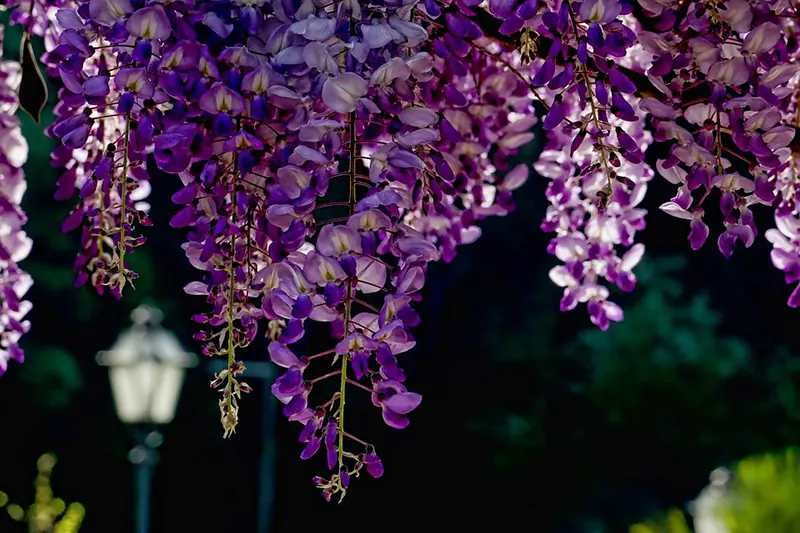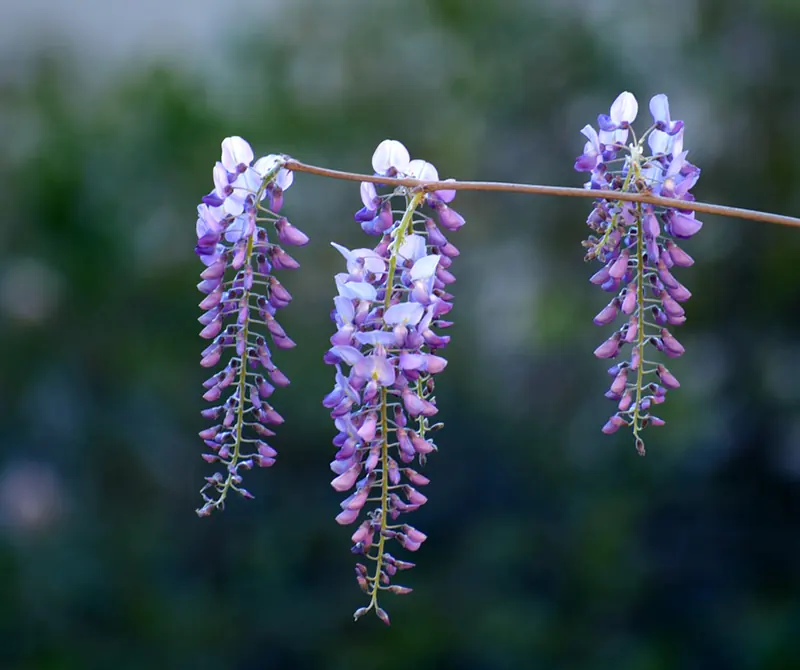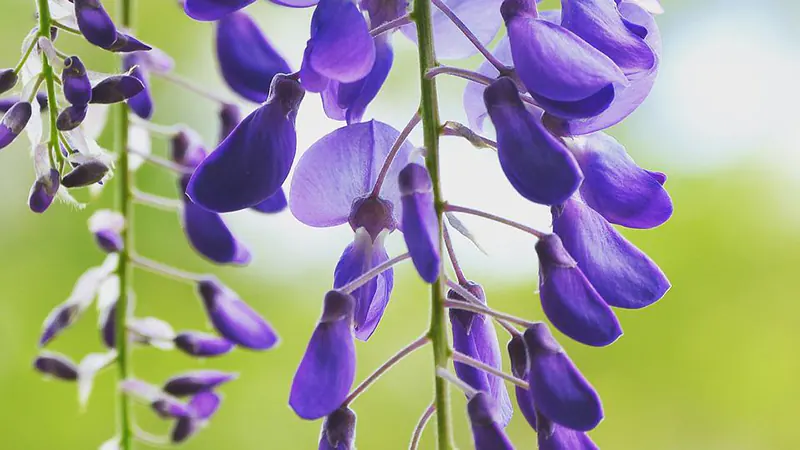How to Prune Wisteria Bonsai?
The fast-growing, vine-like Wisteria is a popular species to use as bonsai because of its beautiful drooping flowers. The Wisteria makes for the perfect specimen for any tree lover with a soft spot for weeping and cascading styles. However, to get to this look, you’ll need to train your bonsai. An important part of training a bonsai is pruning, and that remains true for Wisteria.
In this article, we’ll cover how to prune Wisteria bonsai. We’ll also be taking a look at various important aspects of the Wisteria and the influence these have on pruning. Keep reading to discover more about pruning your Wisteria into the perfect shape.

Best Time To Prune Wisteria
Before we can go into the training of a Wisteria, we must consider the best time of the year to prune your bonsai. You want to ensure you prune your bonsai when it has enough energy to recover quickly from the pruning. Pruning any bonsai too early or too vigorously can have a detrimental effect on the tree’s growth and overall health.
When it comes to Wisteria, you may be tempted to prune the tree frequently because they are such fast growers. If your Wisteria is healthy, you might notice new shoots appearing as early as a few weeks after pruning. However, it is recommended to do a hard, structural pruning only once a year, and then maintenance pruning again after flowering – so two prunings in total a year. The structural or hard pruning is best done in late Winter or early Spring. Maintenance pruning is best done after the bonsai has finished flowering. Pruning while the tree is in bloom can interrupt the flower growth and overall health of your tree.

How To Prune Wisteria Bonsai In 4 Simple Steps
Now, let’s get into the fun part – how to prune a Wisteria bonsai. Pruning a bonsai is very rewarding. Not only do you get to spend time with your miniature tree, but you also get to refine the look of it – and that is always satisfying. All the time spent refining your bonsai’s structure and then being rewarded when the tree blooms is well worth the time and energy spent to get it there.
Step 1: Get Your Tools Together
Before you start pruning, getting your tools together is recommended, so you don’t have to stop in the middle to look for the required tools. Having everything ready and close at hand means that you’ll be able to focus better on the pruning. The tools you’ll require are:
- Pruning shears
- Concave cutter or knob cutter
- Leaf cutter
Step 2: Evaluate Your Tree
Don’t just go and start cutting branches haphazardly. You want to take some time to look at your tree. What shape and style are you going for with this Wisteria bonsai? Remember that Wisteria lends itself to cascading styles as this best presents the flowers when the bonsai starts blooming. Take note of any branches or shoots that don’t work with your style. Also, take note of any branches that grow straight upwards or intersect the trunk, as you might want to remove those.
Step 3: Prune Back The Leaves
You can start by pruning back the leaves using your leaf cutter. This is especially necessary if you have dense foliage and the sunlight isn’t getting through to the leaves on the inside of your bonsai. You can prune back leaves to at least four. However, if your Wisteria is still new in your collection, it might be wise to cut back to six leaves on the first pruning. It is not recommended to completely defoliate your Wisteria during the growing season.
Step 4: Prune Back The Branches And Shoots
Once you’ve addressed the leaves, you can turn your attention to the branches. Using your pruning shears, you should remove all the branches that don’t lend themselves to the final design of your bonsai; unless you’re keeping them as sacrificial branches to help thicken the trunk. You can use the concave or knob cutter to ensure that where you cut the branch, it’s flush with the trunk – this will promote faster healing and less scarring.
You’ll also want to remove branches that grow straight up or down or intersect the trunk. Be careful not to cut away any short shoots on which flower buds are located. Once you’ve completed your pruning, you can wire your bonsai to further improve the structure, although the branches may be more brittle than expected, so for many enthusiasts the clip-and-grow technique works better.

Blooming Wisteria
Wisteria is well known for its beautiful blossoms. These blooms grow in beautiful clusters and come in pinks, whites, blue and most notably, purple. These blooms are one aspect that makes these vines such a popular species to work with in bonsai. However, there are a few things to bear in mind regarding the blooms of Wisteria.
How Long Does It Take For A Wisteria To Start Blooming?
It takes up to ten years for a Wisteria to start blooming, and even then, all other conditions need to be met to ensure they bloom. If you buy a young Wisteria, you should spend a couple of years focusing on training the shape and structure of your Wisteria. Pruning it annually will promote a healthy shape and a structure ideal for carrying the flower clusters and displaying them properly.
When Is A Wisteria’s Blooming Period?
Wisteria usually blooms in late Spring or early summer when grown outdoors. However, when grown indoors or in a climate that doesn’t go through a cold winter, they can bloom throughout the year if their needs are met.
Can Pruning Promote The Amount Of Blooms A Wisteria Produces?
Pruning your Wisteria correctly can lead to more flowers if other conditions are also met. Wisteria is a fast grower, and without proper pruning, it can get out of hand fairly quickly. When the tree is left to grow rapidly with no pruning, the energy goes towards growing rather than producing flowers. A few other factors that can help promote flower growth in your Wisteria are providing enough water and sunlight. You can use a special Wisteria flowering fertilizer that contains less nitrogen and more potassium. If you prefer going the natural route, your Wisteria could benefit from a nice banana tea or dried and ground banana peel sprinkled onto the soil during the flowering season, as bananas are high in potassium.
Final Thoughts
Pruning your Wisteria bonsai, like any other bonsai, is critical to ensure that it stays healthy and keeps looking great. However, it’s critical to know when to prune a Wisteria, as pruning at the wrong time can disrupt its growth and flower development. Making sure that you prune in early spring before the buds start opening and once after your Wisteria has bloomed and the blooms have fallen off the tree is essential.







